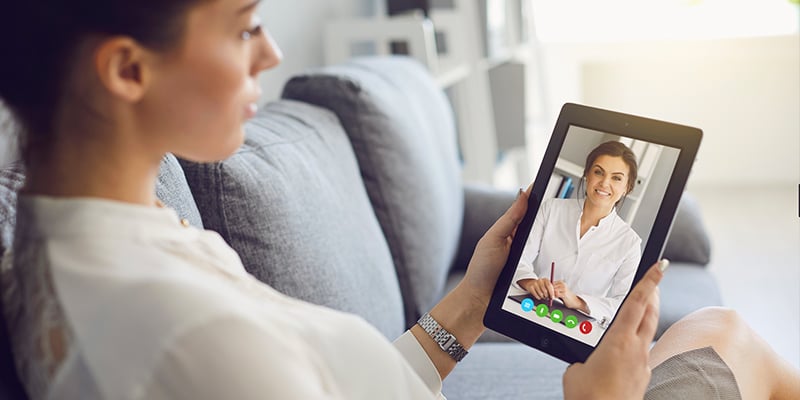
The year 2020 really threw the mental health field for a loop. The pandemic, economic fallout, and social unrest led to skyrocketing incidences of anxiety, depression, post-traumatic stress disorder (PTSD)—or pandemic stress disorder (PSD)—and suicidal thoughts. At Amen Clinics, and for mental health professionals across the nation and around the world, this translated into a greater need than ever for our services.
With restrictions on travel and fears about COVID-19 swirling, however, many people who desperately need our services—and yours—are opting for telemental health appointments. At Amen Clinics, where we have patients in over 150 countries, we have been using telehealth and video therapy for decades. But in the last year, we’ve learned even more about some of the challenges of virtual mental health as well as ways to make these appointments the most effective possible.
Here are 5 things you need to know about mental telehealth.
1. Get a handle on technology issues.
Technology can be a blessing or a curse. If you’re working from home like so many psychiatrists, psychologists, therapists, and counselors these days, be sure to find a place in your home where the internet connection is strong. Before any appointments, be sure you’re all set with any necessary application downloads, such as Zoom, Skype, FaceTime, or Google Meet. Always test the equipment prior to appointments so you can troubleshoot any issues. If you have important materials you’d like to show, practice sharing your screen so your clients/patients can benefit from them.
In addition, be prepared for technological problems and always have a plan B. “I’ve found it helpful to let my patients know ahead of time that if there are any issues with the video on either end that I will call them,” says Rishi Sood, MD, a psychiatrist at Amen Clinics. “For people with anxiety, it takes a bit of the pressure off. They don’t have to worry about missing their session if there’s a computer glitch.”
2. Maintain boundaries.
One of the benefits of telemental health is that clients and patients may feel more comfortable in their own surroundings than in an office setting. In some instances, being able to cozy up with a beloved pet, sit cross-legged on the couch, or have a guitar in hand may help people open up in ways they don’t in the office. In other cases, however, that comfort may creep into a gray area in terms of boundaries. Jennifer Love, MD, an Amen Clinics psychiatrist and author of When Crisis Strikes, says, “I’ve had some patients go shirtless or drink alcohol during appointments, which is a challenge. Others have been out walking, which is like watching ‘The Blair Witch Project.’” Dr. Love says it’s best to encourage clients and patients to sit in a quiet room, have a shirt on, and make space for the appointment. “They need to be present, not at the grocery store where they are distracted by 100 things.”
3. You can’t count on body language.
All mental health professionals know that reading people’s body language can offer important clues to feelings and emotions, but it can be difficult to do that on Zoom and other platforms. You may need to be more vigilant about asking clients/patients to verbalize their emotions. “I put a set of questions near my computer as a reminder to ask for clarifications when I can’t tell from their body language,” says Dr. Sood.
4. It’s a boon for couples therapy.
Seeing couples interact in their home environment can be very helpful and may provide insights you wouldn’t otherwise notice in traditional therapy settings. In addition, people having marital difficulties may benefit more from practicing communication strategies in a real-life setting. “Some of the couples I’m seeing virtually for relationship issues are responding better to the tools and techniques I’m sharing with them,” says Dr. Love.
5. Be prepared for interruptions.
When clients or patients are at home for online sessions, there’s a greater possibility for intrusions—dogs barking, kids bursting into the room, and so on. Understand that this may occur and be ready to bring them back to the session after the disruption. According to Dr. Sood, “When this happens, I have the patient take a couple of deep breaths together with me to reform a connection and re-focus.”
Dr. Rishi Sood and Dr. Jennifer Love practice at Amen Clinics, which offers in-clinic brain scanning and appointments, as well as mental telehealth, remote clinical evaluations, and video therapy for adults, children, and couples. Find out more about our services at AmenClinics.com.




For many clients it’s hard to make telecommunications. It’s difficulties with settings of iPhone, iPad, pc and to be on time. Some patients require cueing.My daughter prefers fade to face communication
Comment by Lena — January 21, 2021 @ 10:59 AM